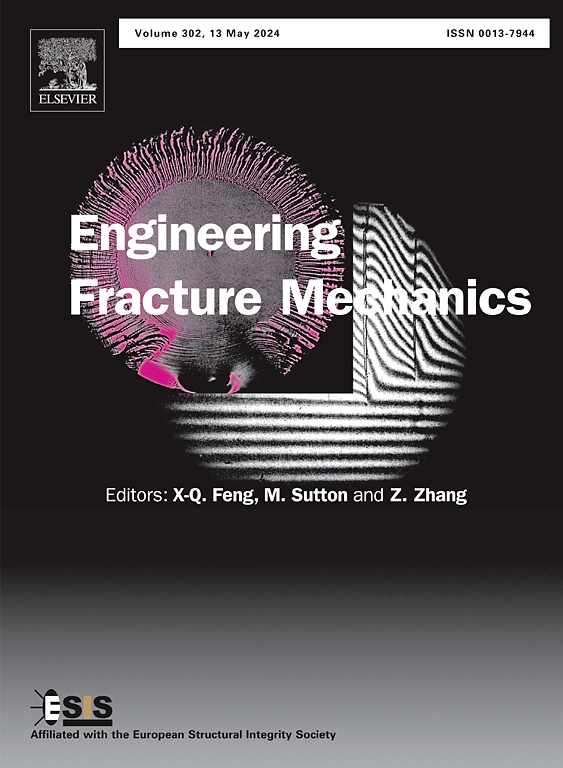Inverse engineering based analytical and numerical prediction on ductile fracture for AZ60M magnesium alloy under wide stress triaxiality
IF 4.7
2区 工程技术
Q1 MECHANICS
引用次数: 0
Abstract
The lightweight automotive and construction industries increasingly rely on magnesium (Mg) alloy structural components as they have the potential to enhance service performance and enable cost-effective manufacturing. However, the extrusion of Mg alloys presents significant challenges, primarily due to their limited formability and the strong crystallographic textures that develop during extrusion. This study investigates the influence of the fracture behavior of AZ60M Mg alloy bars under different stress states, employing several uncoupled damage criteria to enable reliable ductile failure predictions. Tensile and compression tests were conducted using AZ60M specimens of varying geometries and dimensions, revealing distinct deformation scenarios, stress–strain relationships, and fracture forms. Digital Image Correlation technology was employed to capture detailed deformation behavior under diverse stress triaxialities across the extrusion loading direction. Initially, finite element models were developed for each specimen and then optimized using an experiment-based inverse engineering approach, through which the fracture strains were derived by correlating simulation results with experimental data. Additionally, plastic deformation behavior was accurately simulated using the Swift-Voce hardening law. Finally, the Rice-Tracey, DF2014, and DF2016 fracture criteria were calibrated using the experimental data, with the DF2016 model showing superior predictive performance. These findings provide valuable insights for improving the formability and ductile failure prediction of Mg alloys, which is critical for their broader application in lightweight structural components.

基于逆工程的AZ60M镁合金宽应力三轴韧性断裂分析与数值预测
轻量化汽车和建筑行业越来越依赖镁(Mg)合金结构部件,因为它们具有提高服务性能和实现成本效益制造的潜力。然而,镁合金的挤压提出了重大的挑战,主要是由于其有限的成形性和在挤压过程中形成的强晶体织构。本文研究了不同应力状态下AZ60M镁合金棒材断裂行为的影响,采用几种不耦合损伤准则进行了可靠的延性破坏预测。拉伸和压缩试验使用不同几何形状和尺寸的AZ60M试样进行,揭示了不同的变形情景、应力-应变关系和断裂形式。采用数字图像相关技术捕捉挤压加载方向上不同应力三轴性下的详细变形行为。首先,对每个试件建立有限元模型,然后采用基于实验的逆向工程方法进行优化,通过将模拟结果与实验数据相关联,得出断裂应变。此外,采用swift - voice硬化法精确模拟了塑性变形行为。最后,使用实验数据对Rice-Tracey、DF2014和DF2016断裂标准进行校准,DF2016模型显示出更好的预测性能。这些发现为改善镁合金的成形性和韧性失效预测提供了有价值的见解,这对于镁合金在轻量化结构部件中的广泛应用至关重要。
本文章由计算机程序翻译,如有差异,请以英文原文为准。
求助全文
约1分钟内获得全文
求助全文
来源期刊
CiteScore
8.70
自引率
13.00%
发文量
606
审稿时长
74 days
期刊介绍:
EFM covers a broad range of topics in fracture mechanics to be of interest and use to both researchers and practitioners. Contributions are welcome which address the fracture behavior of conventional engineering material systems as well as newly emerging material systems. Contributions on developments in the areas of mechanics and materials science strongly related to fracture mechanics are also welcome. Papers on fatigue are welcome if they treat the fatigue process using the methods of fracture mechanics.

 求助内容:
求助内容: 应助结果提醒方式:
应助结果提醒方式:


